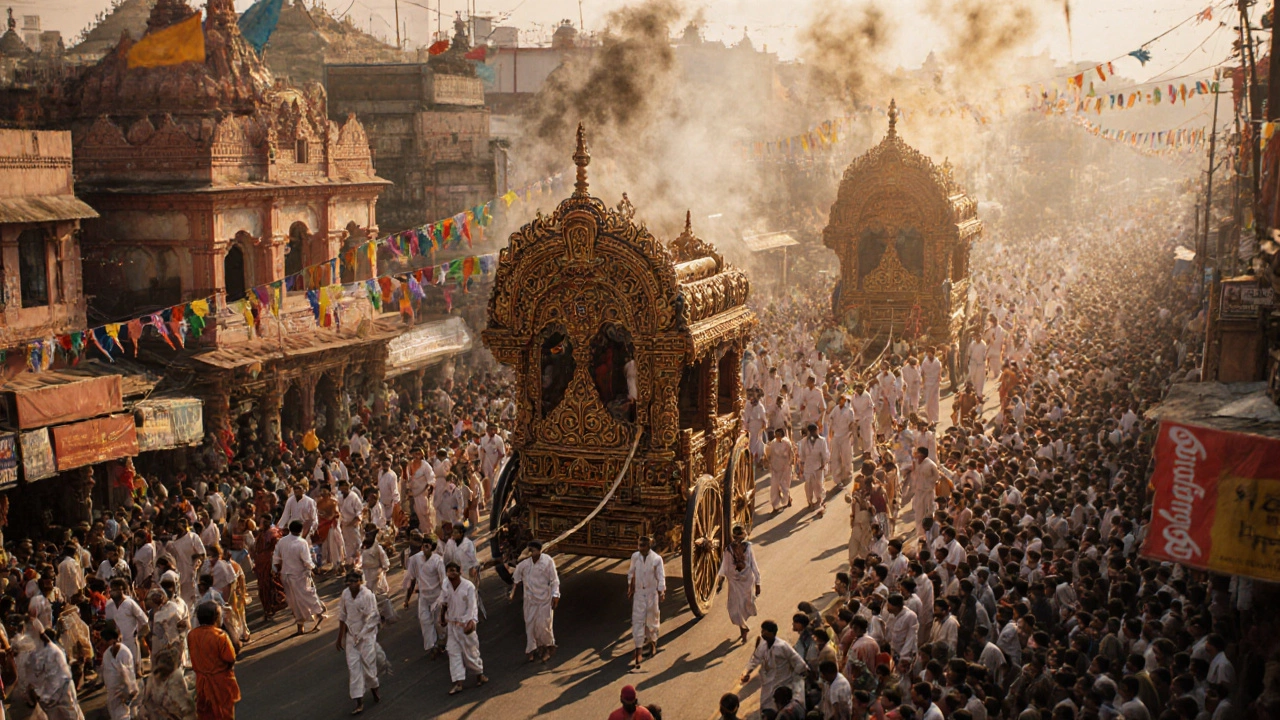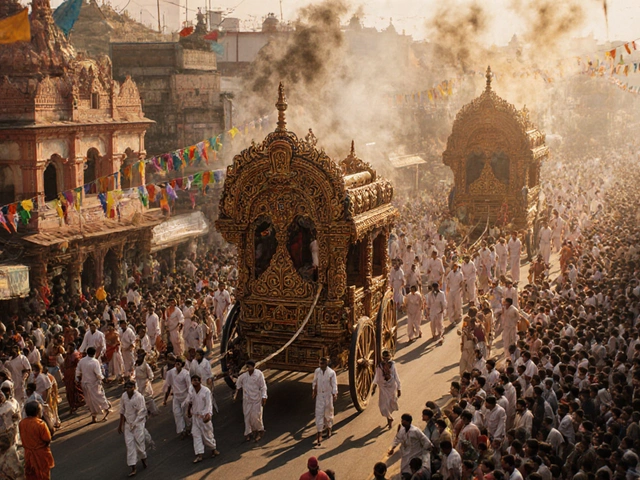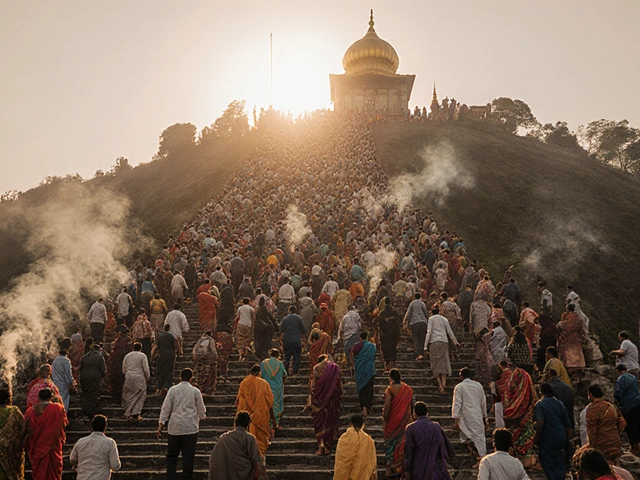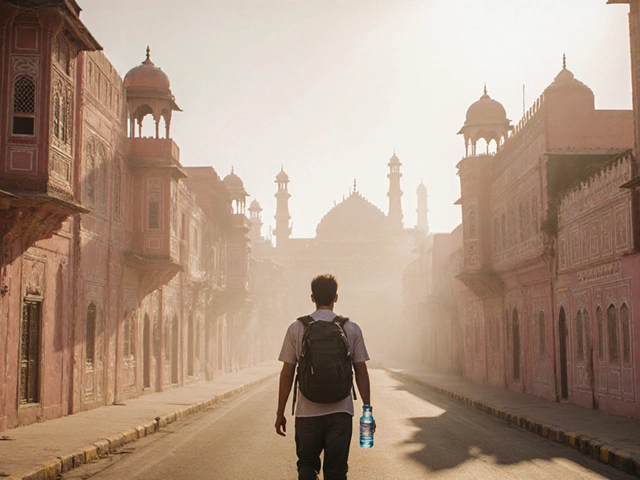Temple Tour Planner Calculator
Temple Tour Planner
Plan your visit to India's most sacred temples with this interactive tool. Select your preferences to get a custom itinerary recommendation.
Recommended Itinerary
Enter your preferences above and click "Calculate Itinerary" to see your personalized plan.
India isn’t just a country with temples-it’s a land where temples are living, breathing parts of daily life. Millions walk through their gates every day, not just to pray, but to connect, celebrate, and find peace. But if you’re planning a temple tour in India and want to know which four stand out above the rest, you’re not just looking for beauty. You’re looking for meaning. These aren’t just architectural wonders. They’re the spiritual anchors of a civilization that’s lasted over 5,000 years.
Shri Jagannath Temple, Puri
On the eastern coast of Odisha, the Jagannath Temple isn’t just a place of worship-it’s a cultural earthquake. Every year, over a million people gather here for the Ratha Yatra, where three massive wooden chariots carry the deities Jagannath, Balabhadra, and Subhadra through the streets. The chariots are so big, they’re built from scratch each year using specific types of wood from nearby forests. The temple’s kitchen feeds up to 100,000 people daily, making it the largest free community meal in the world. What makes this temple unique isn’t just its scale, but its rules: only Hindus are allowed inside the main sanctum, and the deities are made of wood, not stone or metal, which is unusual in Hindu tradition. The idol of Jagannath, with its large round eyes and simplified face, is unlike any other in India. Locals say it’s not about the form-it’s about the presence.
Meenakshi Amman Temple, Madurai
In the heart of Tamil Nadu, the Meenakshi Amman Temple looks like something from a dream. Its 14 towering gopurams (gateway towers) are covered in thousands of brightly painted statues of gods, demons, animals, and mythological scenes. Walk through any of them, and you’ll feel like you’ve stepped into a living sculpture garden. The temple complex is so large, it contains over 33,000 sculptures and 1,000 pillars, each carved with intricate detail. The main shrine is dedicated to Meenakshi, a form of Parvati, and her husband Sundareswarar, a form of Shiva. Unlike most temples where the male deity comes first, here, Meenakshi is the primary figure. The temple’s history goes back over 2,500 years, though most of what you see today was rebuilt in the 16th century. Even now, the temple buzzes with daily rituals-bells ringing, chants echoing, and priests offering flowers and incense. It’s not just a place to visit. It’s a place to experience.
Golden Temple, Amritsar
The Golden Temple, or Harmandir Sahib, is the spiritual center of Sikhism. Located in Amritsar, Punjab, it sits in the middle of a sacred pool called the Amrit Sarovar, which means ‘Pool of Nectar.’ The entire temple is covered in gold leaf, and its marble floors reflect the shimmering light like a mirror. What makes this temple different from others in India is its openness. Anyone-regardless of religion, caste, or background-is welcome to enter. There’s no gatekeeper. No fee. No restrictions. Inside, the Guru Granth Sahib, the holy scripture of Sikhism, is read aloud 24 hours a day, seven days a week. The temple also runs the world’s largest free kitchen, serving over 100,000 meals daily. Volunteers from all walks of life prepare, serve, and clean up. It’s not charity. It’s seva-selfless service. The Golden Temple doesn’t just welcome visitors. It transforms them. Many come for the beauty. They leave with a new understanding of equality.
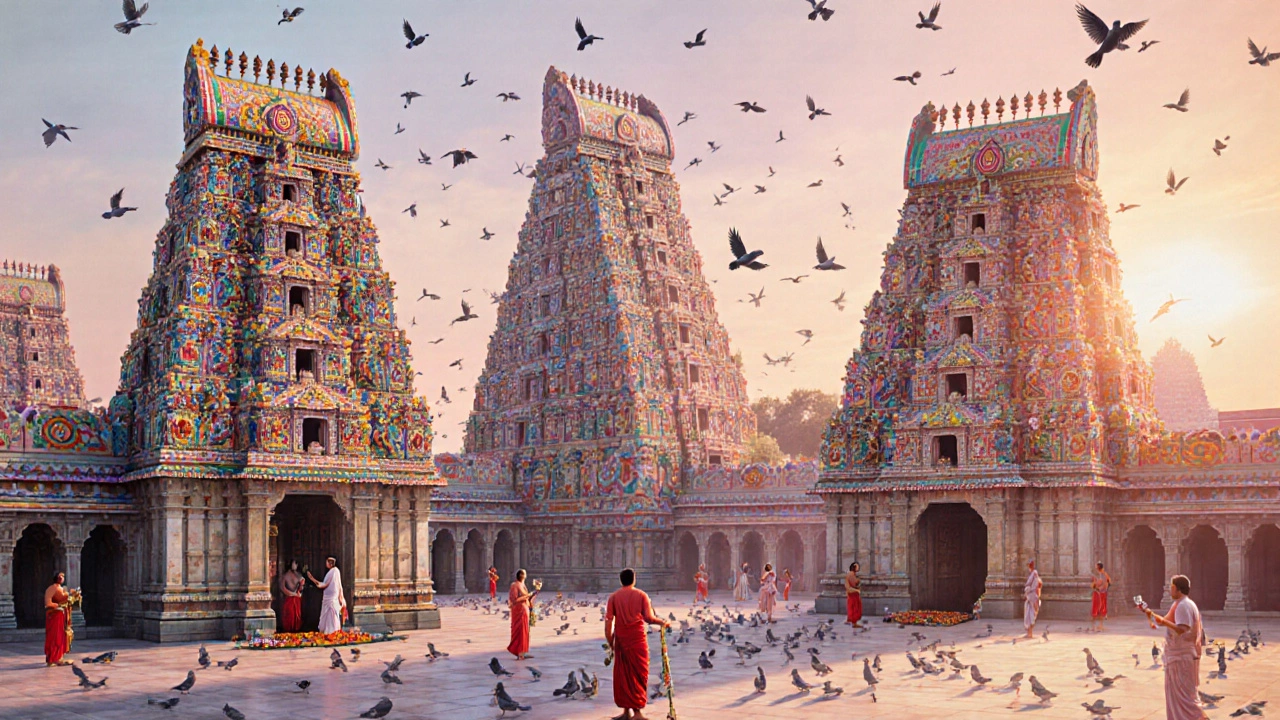
Kashi Vishwanath Temple, Varanasi
Varanasi, one of the oldest continuously inhabited cities on Earth, is home to the Kashi Vishwanath Temple, dedicated to Lord Shiva. For Hindus, dying in Varanasi means liberation from the cycle of rebirth. Pilgrims come here not just to pray, but to be near the divine. The temple’s current structure was built in 1780 by Queen Ahilyabai Holkar of Indore, after the original was destroyed. It sits on the banks of the Ganges, and its golden spire can be seen from miles away. Inside, the jyotirlinga-a sacred lingam made of black stone-is believed to be one of the 12 most powerful representations of Shiva. Thousands gather each morning to bathe in the Ganges and offer prayers. The temple’s narrow alleys are filled with sadhus, priests, and pilgrims. Even the air feels different here-thick with incense, chants, and the sound of temple bells. It’s not a tourist spot. It’s a spiritual crossroads.
Why These Four?
These four temples aren’t chosen because they’re the biggest or the oldest. They’re chosen because they represent four different faces of Indian spirituality. Jagannath shows devotion through community and ritual. Meenakshi Amman reveals the power of the feminine divine. The Golden Temple teaches universal love and service. Kashi Vishwanath connects death with liberation. Together, they show the depth of India’s religious landscape-not as a single belief, but as a tapestry of traditions, each woven with its own colors and threads.
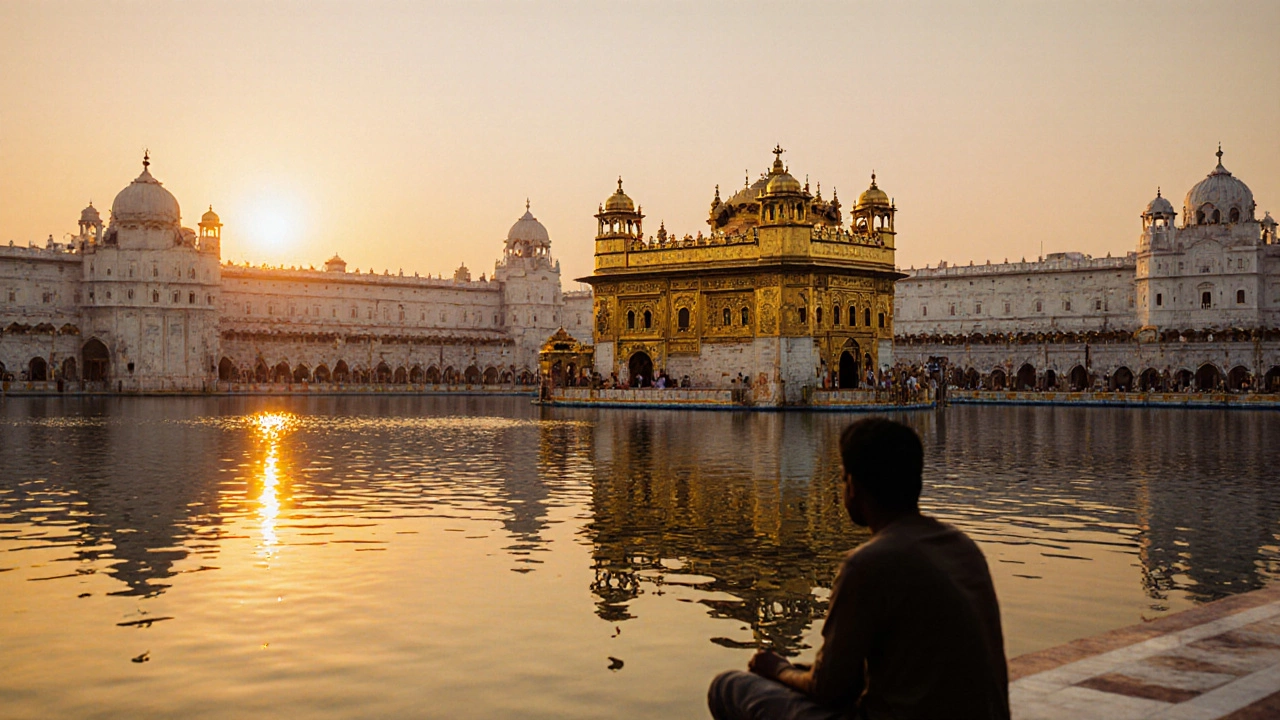
What to Expect on a Temple Tour
If you’re planning to visit these sites, here’s what you need to know. First, dress modestly. Shoulders and knees should be covered. Most temples require you to remove your shoes before entering. At the Golden Temple, you’ll need to cover your head with a scarf, which is provided for free. Photography is often restricted inside the main sanctum. At Kashi Vishwanath, you’ll need to book a ticket in advance to enter the inner chamber. At Meenakshi, the best time to visit is early morning when the temple is quiet and the light hits the gopurams just right. And always carry cash-many rituals require offerings, and digital payments aren’t always accepted.
Best Time to Visit
October to March is the ideal window for temple tours in India. The weather is cooler, especially in the north. Puri and Madurai can be humid year-round, but winter brings relief. Avoid monsoon season (June to September) if you’re traveling between cities-roads get flooded, and trains delay. If you want to see the Ratha Yatra in Puri, plan for June or July. For the Kashi Vishwanath temple, the month of Shravan (July-August) is especially sacred, with crowds swelling to double. But if you want peace, go in November or December. The crowds thin, and the air feels clearer.
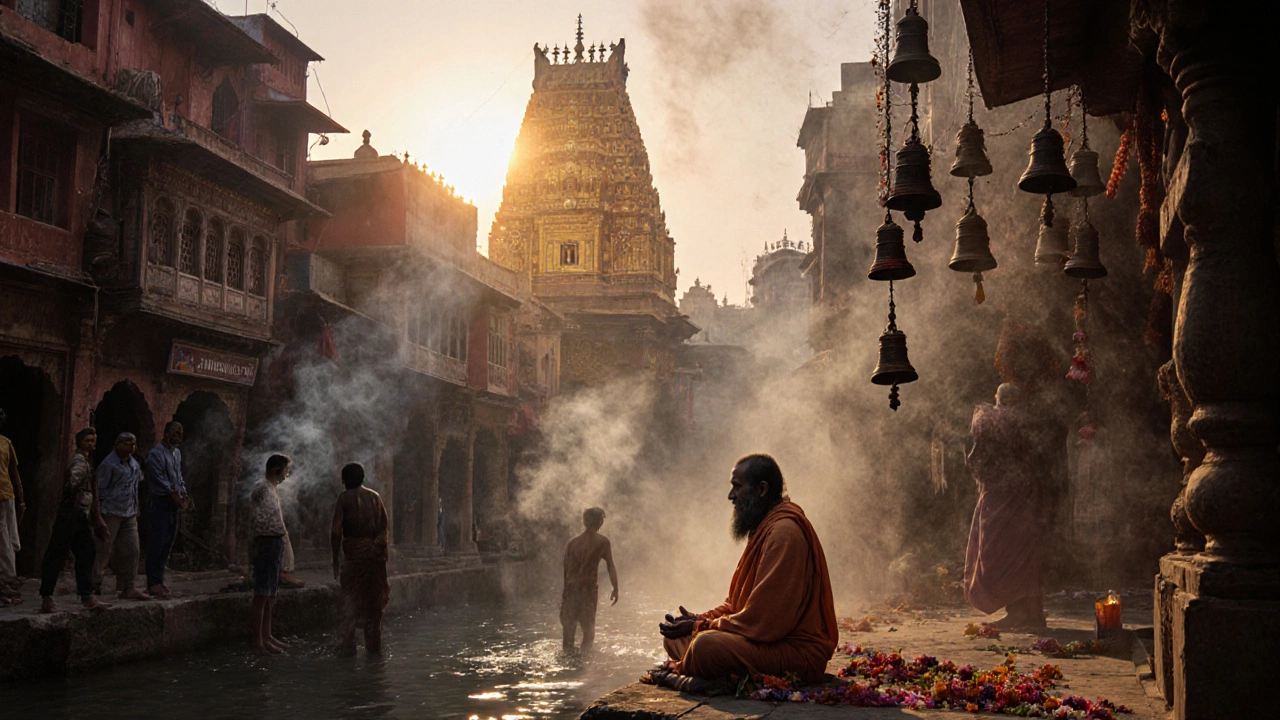
What You Won’t Find in Guidebooks
Most travelers rush through these temples, snapping photos and moving on. But the real experience comes from sitting quietly. Watch the priests. Listen to the chants. Watch how people bow, touch the ground, and whisper prayers. At the Golden Temple, sit by the pool and watch the sunset reflect off the gold. At Meenakshi, climb to the top of one of the gopurams for a view of the entire city below. At Jagannath, try the prasad-offered food that’s considered blessed. At Kashi, take a boat ride on the Ganges at dawn. These aren’t just sights. They’re moments that stay with you long after you leave.
Are non-Hindus allowed inside the Jagannath Temple?
No, non-Hindus are not permitted inside the main sanctum of the Jagannath Temple in Puri. This restriction is based on long-standing religious tradition. However, visitors of all faiths can view the temple from the outer courtyards and participate in the public festivities, including the Ratha Yatra, which happens on the streets outside the temple walls.
Can I take photos inside the Golden Temple?
Photography is allowed in the outer courtyards and around the Amrit Sarovar, but not inside the main sanctum where the Guru Granth Sahib is kept. Cameras and phones must be left at the security check before entering the inner area. This is out of deep respect for the sacred scripture, which is treated as a living guru.
Is there a dress code for visiting temples in India?
Yes. Most temples require modest clothing-shoulders and knees covered. For men, this means long pants and shirts. For women, sarees, salwar kameez, or long skirts with tops are preferred. At the Golden Temple, everyone must cover their head with a scarf, which is provided free at the entrance. Wearing shorts, tank tops, or revealing clothing may result in being turned away.
How much time should I spend at each temple?
Plan at least 2-3 hours for each temple. The Golden Temple and Meenakshi Amman Temple are large complexes that can easily take half a day to explore fully. Kashi Vishwanath is smaller but often has long queues, especially during peak hours. Jagannath Temple’s outer areas are open all day, but the inner sanctum has limited access. If you want to experience rituals like the aarti (prayer ceremony), arrive 30 minutes before it starts.
Are these temples accessible for people with mobility issues?
Accessibility varies. The Golden Temple has ramps and wheelchairs available on request. Meenakshi Temple has many steps and narrow paths, making it difficult for those with mobility challenges. Kashi Vishwanath has a few wheelchair-accessible routes, but the inner sanctum is not accessible. Jagannath Temple allows special entry for those with disabilities if arranged in advance through the temple office. Always call ahead to confirm accommodations.
Next Steps for Your Temple Tour
If you’re serious about visiting these four temples, start with a plan. Book flights to Delhi or Chennai, then use trains or private drivers to reach each site. Consider a 10-14 day itinerary that includes Puri, Madurai, Amritsar, and Varanasi. Stay in temple guesthouses-they’re clean, affordable, and offer a quieter experience than hotels. Pack light, bring a reusable water bottle, and carry a small towel for foot washing at temple entrances. Most importantly, go with an open heart. These temples don’t ask for your beliefs. They ask for your presence.
